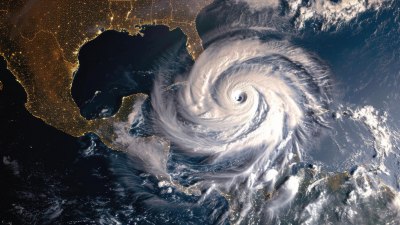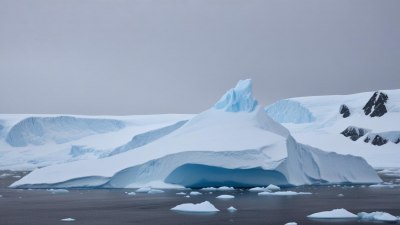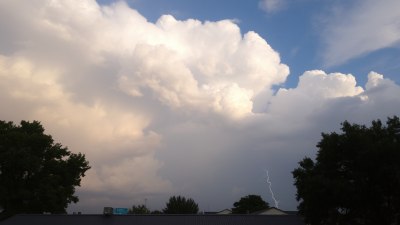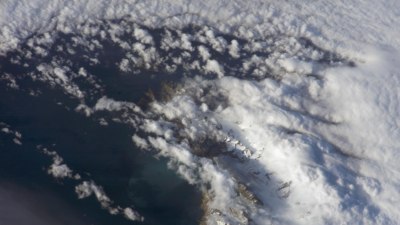How Hurricanes Are Born in Hot Ocean Waters and Why That’s Changing
Explore the formation of hurricanes in warm waters and the shifts impacting their creation due to climate change.

Image by viceshutter on Freepik
Hurricanes are among the most powerful and destructive forces of nature, forming over warm ocean waters and evolving into massive storms that can wreak havoc along coastlines. Understanding how these storms are born requires a closer look at the processes that lead to their formation and the changing climate that influences these essential factors. In this article, we will explore how hurricanes are created in hot ocean waters and analyze the trends that are shifting their patterns and intensity due to global warming and climate change.
At the heart of hurricane formation is a mix of atmospheric and oceanic conditions. Hurricanes typically form over ocean waters that are at least 26.5 degrees Celsius (about 80 degrees Fahrenheit). The warmth of the ocean water provides the necessary energy to fuel the storm's development. As the sun heats the water, evaporation occurs, leading to the formation of warm, moist air masses. As this warm air rises, it creates a low-pressure area beneath it, drawing in cooler air from the surrounding regions.
Once the warm moist air rises, it begins to cool, condensing into water droplets which release latent heat in the process. This release of heat causes the surrounding air to become even warmer and lighter, prompting more air to rush in to fill the low-pressure void. This cycle of rising air, condensation, and heat release continues to strengthen the storm, resulting in the formation of a tropical depression. When winds reach a sustained speed of 39 miles per hour, the depression is classified as a tropical storm. If these winds reach 74 miles per hour or higher, the storm is deemed a hurricane.
The Coriolis effect, caused by the rotation of the Earth, is another critical factor in hurricane formation. This effect helps to create the spiral shape of hurricanes and is essential for their rotation. Hurricanes typically form in tropical and subtropical regions, generally between 5 and 20 degrees latitude north and south of the equator. Beyond this range, the Coriolis effect is too weak to sustain the rotation needed for hurricane development.
Another vital element of hurricane birth is the existence of strong weather systems that can help to organize the storm. For a hurricane to form, a cluster of thunderstorms must converge and, through a process called synoptic scale convergence, begin to organize around an area of low pressure. Only under the right conditions, including low wind shear and sufficient moisture in the atmosphere, can storms start to coalesce into a hurricane.
However, in recent years, scientists have observed changes in the patterns and behavior of hurricanes that can be attributed to climate change. With global temperatures on the rise, ocean waters have also warmed significantly. The National Oceanic and Atmospheric Administration (NOAA) has documented a dramatic increase in sea surface temperatures, which in turn affects the frequency and intensity of hurricanes. Warmer waters provide more energy, which can lead to more severe storms and increased rainfall. A study published in the journal 'Nature' indicated that hurricane intensity has increased over the past several decades, particularly in the Atlantic Ocean.
This increase in hurricane intensity is accompanied by more frequent and severe weather events. In addition to more powerful storms, scientists are witnessing a change in hurricane tracks. Historically, many hurricanes followed predictable paths; however, changing atmospheric conditions and ocean temperatures have caused shifts in these trajectories. This unpredictability can lead to greater challenges in preparedness and response efforts.
The rising sea levels associated with climate change also contribute to the severity of hurricanes. Higher sea levels intensify storm surge effects, leading to more extensive flooding during landfall. Storm surges—large increases in sea level created by wind and low atmospheric pressure—are a primary cause of hurricane-related mortality and damage. Communities and ecosystems along coastlines are therefore at greater risk with climate-related changes increasing both the frequency and force of these storms.
Hurricane forecasting has become an essential tool for mitigating the impacts of these storms. Meteorologists utilize advanced technologies, including satellite imagery and numerical weather prediction models, to track storms and predict their behavior. This advancement helps coastal communities prepare for potential impacts, allowing for timely evacuations and resource allocation. Despite these advancements, the unpredictable nature of hurricanes poses ongoing challenges, particularly as climate change continues to alter their formation and behavior.
Climate Change Impact on Hurricane Frequency and Intensity
The relationship between climate change and hurricane activity is complex and still being studied. Some researchers believe that while overall hurricane numbers may not significantly increase, the intensity and destructiveness of individual storms will rise. The IPCC (Intergovernmental Panel on Climate Change) has acknowledged that as global temperatures continue to rise, we can expect to see an increase in tropical cyclone intensity worldwide. Factors contributing to this change include the increased availability of warm ocean water and shifting atmospheric dynamics. Warmer air can hold more moisture, which means more rainfall during storms, increasing potential flooding.
Moreover, as hurricanes become stronger, their impacts are felt in various ways, including more extensive damage to infrastructure, housing, and local economies. Research indicates that hurricanes are likely to generate stronger winds and more substantial storm surges, which can lead to catastrophic consequences for coastal areas. As a result, understanding how hurricanes form and the factors influencing their development is critical for risk assessment and disaster preparedness.
The relationship between global warming and hurricanes extends beyond the storms themselves; it also encompasses changes in the entire earth system. Warmer temperatures are resulting in altered weather patterns and increased variability in precipitation, leading to extreme weather events that coincide with or follow hurricanes. The consequences can be devastating, resulting in widespread flooding, landslides, and disruptions to natural ecosystems.
As scientists continue to investigate the links between climate change and hurricane patterns, public awareness and education become increasingly vital. Preparing for hurricane season involves understanding the risks associated with these storms, particularly as their frequency and intensity may change with our warming planet. Communities are encouraged to develop comprehensive emergency management plans, invest in resilient infrastructure, and remain informed about weather forecasts and warnings.
The Future of Hurricanes
The future of hurricanes in a warming world remains uncertain, but trends indicate we need to brace for changes. As continued warming of ocean waters elevates the chance for intense storms, the interconnectedness of climate change and hurricane activity becomes clearer. Addressing the root causes of climate change—primarily greenhouse gas emissions—is critical to mitigating these risks and minimizing the impacts of hurricanes. It is vital to engage in sustainable practices and policies that protect our environment and reduce our carbon footprint.
In addition to global initiatives, local preparations play a vital role. Communities need to be equipped with resources and planning to face potential hurricanes and adapt to changing conditions. Understanding how hurricanes are born in hot ocean waters provides insight into the broader implications of our planet's changing climate and underlines the importance of proactive measures for reducing vulnerability to these powerful storms.
In conclusion, hurricanes are a natural phenomenon resulting from specific atmospheric and oceanic conditions, with hot ocean waters serving as their foundation. As climate conditions evolve, so too will the nature of hurricanes, reflecting the immense influence of global warming on their formation and behavior. Tackling climate change and its associated impacts is essential to safeguarding communities and ecosystems worldwide from the increasingly unpredictable realities of hurricanes.











